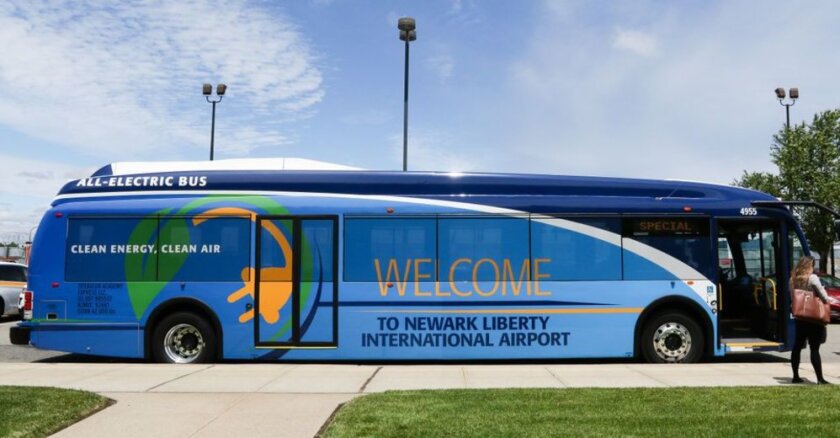The forecast comes from industry and analysists insiders who say public agencies have generally already budgeted and set in place the procurement process for vehicle replacements and upgrades to electric buses, despite the more recent crippling effects of the coronavirus crisis which has significantly reduced ridership across a number of transit agencies. By mid-year, public transit ridership was down 44.2 percent in the United States, according to the American Public Transit Association (APTA).
However, the generous operational costs savings resulting from an increasingly electric vehicle fleet, as well as other factors like clean air goals are enough to not skuttle plans to phase out older, fossil fuel burning fleets.
“They [transit agencies] are taking a forward -looking decision to say, when the world comes out of this, we will continue need to upgrade and serve the greater public good,” said Vic Shao, CEO of AMPLY Power, a maker of electric fleet charging infrastructure and management software.
“There will be an end-date to COVID-19, and the world will need to get back to normal at some point,” he added. “Even though their ridership is down, they’re not about to go out of business.”
The Anaheim Transportation Network (ATN) recently announced a partnership with AMPLY to manage all aspects of the agency’s charging operations for ATN’s fleet of 46 electric buses.
“Both the COVID-19 crisis and the resulting budget cuts by state and municipalities are downside risks to the future of e-bus adoption in the U.S., Cory Cantor, a transportation analyst with BloombergNEF, told Government Technology in mid-October.
“However, it is important to note that budgets and procurement contracts are typically made some time in advance, so the immediate effect of COVID-19 will be less severe for e-buses than other transport sectors,” he added via email.
By the end of 2019 there were about 470 electric buses in operation in public transit agencies across the United States, said Cantor, with some of the major drivers of e-bus adoption being the improved economic profile of the vehicles when it comes to operating them, as well as public policy mandates taken by states like California which will transition heavy-duty trucks and buses to zero emission vehicles starting in 2024. By 2045, all trucks sold in the state are set to be zero-emission, coinciding with the state's goal of reaching carbon neutrality.
“I do think a lot of it is sustainability goals, which is inherently a part of transit,” reflected Lisa Jerram, Director of Bus Programs & Emerging Vehicle Technologies at the American Public Transit Association, on the transition to new battery-electric buses. “We do track the types of fuel that transit buses use. And over the past decade the transit bus fleet in the U.S. has moved from being almost 100 percent diesel to being over 50 percent alternatives to diesel. So, it’s already part of transit’s mission, and it’s already part of what transit does.”
The electrification of transit is a natural evolution given transit’s trend to search out sustainability, she told Government Technology earlier this year.
“Now that electric technology has developed, there’s a real interest in seeing if you can go full zero emission,” said Jerram.
The transition to e-buses by private fleets may be slowed due to spending pullbacks related to COVID, say observers, like Shao, adding some of those projects have been put on hold, “and in some cases indefinitely.”
“Public sector, we don’t see a pause. If anything, we’re seeing a lot more public RFPs, than before COVID” he added.
Transitioning away from fossil fuel vehicles is a trend to expected into 2021, said Cantor.
“By 2025, we expect the U.S. to have over 5,000 e-buses due to the e-bus procurement targets of states like California and major municipalities like New York City, Chicago and Seattle,” said Cantor.
ACE Parking, which manages the parking lot shuttle fleet at San Diego International Airport is in the process of transitioning the entire fleet of 29 vehicles to battery-electric shuttles. The shuttles will be made by Endera, which also provides the charging infrastructure.
The vehicles' range lasts up to 130 miles and they are able to perform in the same manner as a gas or diesel vehicle,” said Kristin Ludwick, a spokeswoman for Endera.
ACE Parking is expected to save some $580,000 a year in fuel costs, Ludwick added.
Transit organizations, large and small, are moving forward with the electric bus trend. OmniTrans in San Bernardino County, Calif. operates about 285 transit vehicles across a service area of 456 square miles. The transit agency just put in an order for four, 40-foot battery-electric buses, built by New Flyer of America. It will be OmniTrans first foray into operating battery-electric buses, as the agency complies with a mandate in California that new bus purchases be zero-emission by 2025.
“The buses are set to go into service in early 2021, and Omnitrans’ plan is to utilize the vehicles in daily service on two routes, one each in the East and West Valley regions of the agency’s service area,” said Nicole Ramos, director of marketing and communications at OmniTrans.
Other small agencies like StarTran in Lincoln, Neb. also just announced plans in February to purchase 10 35-foot battery-electric buses in an effort to reduce greenhouse gas emissions by 100 to 160 tons per year. Like OmniTrans, these buses will be StarTran’s first introduction to electric buses.
Putting just a few buses in use – starting slow – is not uncommon among transit agencies as they gently feel their way across this new technological landscape. Prior to the Los Angeles Department of Transportaion's (LADOT) sizable fleet transition to electric, the agency had only four, said Colin Sweeney, public information director at the LADOT. The buses were largely used for testing purposes.
“As the buses were shown to perform to expectations we will now be expanding at scale the use of electric buses as demonstrated by this purchase,” said Sweeney in an email.









